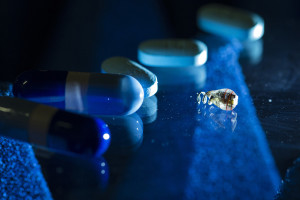Powering tiny medical circuits in the body

In my interview last year with Dr. Metin Akay, he described the daunting problem of powering tiny computer chips deep inside the body. Neurologists, he said, can already control the misfiring of rogue neurons that cause epilepsy by implanting small electrodes in the brain cluster of misbehaving neurons, but they still must resolve battery-life issues and need a reliable power source.
Today they do this by connecting the electrodes to a power source worn outside the body, but Stanford assistant professor of electrical engineering, Ada Poon, has found a safe way to transfer energy to tiny circuits the size of a grain of rice using targeted ratio waves.
The technology eliminates the bulky batteries and clumsy recharging systems and paves the way for new “electroceutical” devices to treat illness or ease pain with electronics and not drugs. As Akay suggested, such treatments could be more effective than drugs for some medical conditions, especially those related to neurological disorders.
The crux of the discovery involves a new way to control and focus electromagnetic waves inside the body. Using roughly the same transmit power as a cell phone, radio waves are beamed to the tiny device, providing power remotely in a way that’s similar to the charging station for my electronic toothbrush.
As fellow Stanford engineer John Ho noted, “With this method, we can safely transmit power to tiny implants in organs like the heart or brain, well beyond the range of current near-field systems.”
